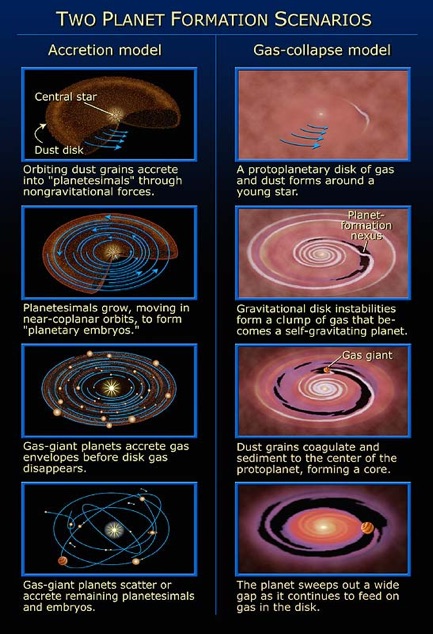

However, in Zhu et al. (2012), our simulations suggest that planets formed by GI scenario have many other difficulties.
We carried out two-dimensional hydrodynamic simulations of self-gravitating protostellar disks subject to axisymmetric, continuing mass loading from an infalling envelope and irradiation from the central star to explore the growth of gravitational instability (GI) and disk fragmentation. We confirm that for disks around solar-mass stars, infall at high rates at radii beyond ~50 AU leads to disk fragmentation. At lower infall rates, however, irradiation suppresses fragmentation.
We find that, once formed, the fragments or clumps migrate inward on typical type I timescales of ~2 × 103 yr initially, but with a stochastic component superimposed due to their interaction with the GI-induced spiral arms. Migration begins to deviate from the type I timescale when the clump becomes more massive than the local disk mass, and/or when the clump begins to form a gap in the disk.
As they migrate, clumps accrete from the disk at a rate between 10-3 and 10-1 M J yr-1. The eventual fates of these clumps, however, diverge depending on the migration speed: 3 out of 13 clumps in our simulations become massive enough (brown dwarf mass range) to open gaps in the disk and essentially stop migrating; 4 out of 13 are tidally destroyed during inward migration; and 6 out of 13 migrate across the inner boundary of the simulated disks.
Overall, our results indicate that fast migration, accretion, and tidal destruction of the clumps pose challenges to the scenario of giant planet formation by GI in situ, although we cannot address whether or not remnant solid cores can survive after tidal stripping. The models where the massive clumps are not disrupted and open gaps may be relevant to the formation of close binary systems similar to Kepler 16. A clump formed by GI-induced fragmentation can be as large as 10 AU and as luminous as 2 × 10-3 L sun, which will be easily detectable with ALMA, but its lifetime before dynamically collapsing is only ~1000 years.
Credit: NASA and A. Feild (STScI)
